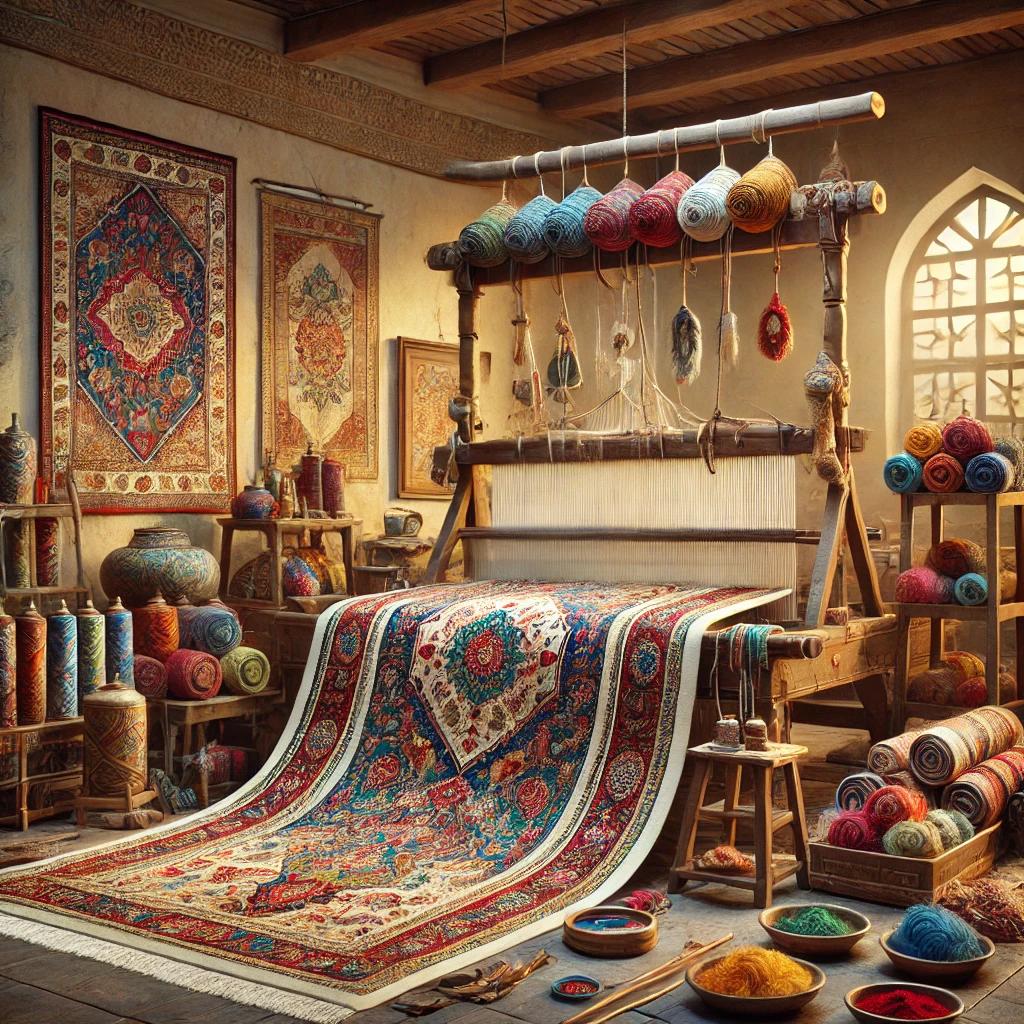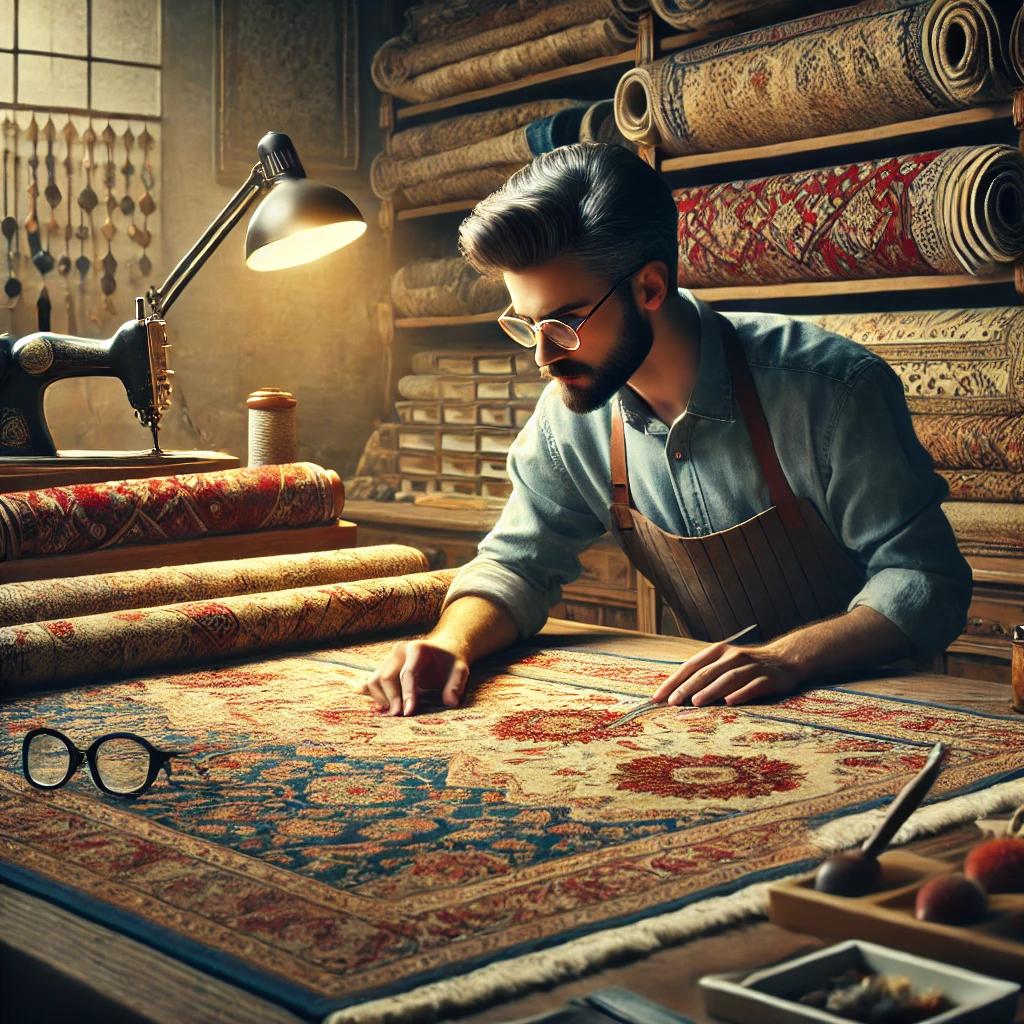
Understanding Rug Age and Its Impact on Value
Estimated reading time: 7 minutes
Key Takeaways
- Rug age significantly affects its perceived value.
- Materials like wool enhance durability and longevity.
- Craftsmanship and weaving techniques vary widely, influencing aging properties.
- Environmental factors can accelerate wear and affect value.
- Rarity and condition are crucial in determining a rug’s market worth.
Table of contents
- Factors Influencing Rug Age
- Materials and Construction
- Craftsmanship and Weaving Techniques
- Environmental Conditions
- Assessing the Age of a Rug
- Visual Indicators
- Back of a Rug
- Back of Persian Rug
- Wool Rug Durability and Aging
- Benefits of Wool in Rug Longevity
- Maintenance Practices
- Impact of Durability on Value
- Understanding How Age Affects Rug Value
- Rarity and Collectibility
- Condition vs. Age
- Market Trends
- Conclusion
- Additional Resources
Rug age is a crucial concept in the world of textiles, especially for collectors and buyers aiming for authenticity and investment potential. The chronological age of a rug plays a vital role in assessing its value. By understanding rug age, one can better navigate the market, ensuring that both collectors and investors make informed decisions regarding their acquisitions. Rug age is intertwined with various factors affecting value, including materials, craftsmanship, and environmental conditions. Let’s take a closer look at how these elements contribute to a rug’s age and its overall worth.
Factors Influencing Rug Age
Materials and Construction
The materials used in creating a rug significantly impact its longevity and aging process. One of the most prized materials is wool, known for its natural resilience and durability.
- Wool Rug Durability: Wool stands out for its capacity to withstand years of wear, making it a preferred choice in rug production. Its inherent properties include:
- Natural lanolin, which repels dirt and moisture.
- Resistance to tearing and fraying.
Wool rugs can endure generations of use while maintaining their structure and appearance. As noted by industry experts, “Wool is prized for its resilience and ability to withstand wear over decades” (source). This durability is pivotal in preserving quality over time, enhancing the overall value of the rug.
Craftsmanship and Weaving Techniques
The craftsmanship involved in rug creation also plays a significant role in determining rug age. Traditional hand-knotted and hand-woven rugs often demonstrate superior aging properties when compared to modern machine-made rugs (source).
- Handwoven rugs from regions such as Persia are particularly known for their dense weaving and intricate designs, which contribute to their aging favorably due to:
- Superior attention to detail.
- Higher knot density, leading to enhanced durability over time.
Rugs made during historical periods, like the Safavid dynasty, showcase masterful techniques of weaving valued for their distinct aging process. These traditional methods often yield rugs that can increase in value as they age (source).
Environmental Conditions
Environmental factors significantly influence how a rug ages. Elements such as light exposure, humidity, and foot traffic can wear down a rug, making it essential to consider these factors seriously.
- Light and Humidity: Exposure to harsh light and high humidity can lead to:
- Color fading and degradation of fibers.
- Breakdown of patterns that affect both the aesthetic and intrinsic value.
The rug’s environment plays a critical role in its longevity—rug materials kept away from excessive moisture and direct sunlight typically maintain their vibrant colors and appealing designs over the years. Research indicates that “Exposure to light and humidity accelerates color fading” (source).
Assessing the Age of a Rug
Visual Indicators
When evaluating the age of a rug, visual indicators play a significant role in identification.
- Signs of Aging: Common signs to look for include:
- Faded colors that suggest prolonged exposure to light.
- Worn patterns or frayed edges that indicate regular use over time.
These signs can substantially affect the presumed value of a rug. A well-preserved rug will likely be more valuable than one exhibiting significant wear.
Back of a Rug
The back of a rug can provide invaluable insights into its age and authenticity (source).
- Examining the Back of a Rug entails looking for indicators like:
- Knot density, which can reveal the rug’s construction quality.
- Original thread colors often remain clearer on the back, helping to date the rug effectively.
Research suggests that “knot density and original thread colors can indicate age” (source).
Back of Persian Rug
When particularly assessing Persian rugs, the back offers vital clues about age.
- Notable characteristics to look for include:
- Oxidized Threads: Older rugs often present oxidized threads, indicating an age that collectors often seek.
- Unique Patina Characteristics: These features can also provide clues regarding authenticity and age—older Persian rugs typically demonstrate these traits.
According to experts, “Older Persian rugs show unique features that indicate age and authenticity” (source).
Wool Rug Durability and Aging
Benefits of Wool in Rug Longevity
Wool is highly regarded in rug production for its numerous benefits.
- It retains natural oils within its fibers, promoting:
- Enhanced resilience against dirt and wear.
- Long-lasting beauty that can be maintained over decades.
Research underscores that “Wool surpasses cotton or synthetic options in longevity” (source), making wool rugs a sound investment for collectors and buyers alike.
Maintenance Practices
To preserve the durability and beauty of wool rugs, proper maintenance is essential (source).
- Recommended practices include:
- Regular vacuuming to remove dirt and dust.
- Rotating rugs periodically to ensure even wear.
- Minimizing exposure to adverse conditions, such as moisture or direct sunlight.
These practices are crucial for maintaining the longevity of wool rugs and protecting their value.
Impact of Durability on Value
The relationship between durability and value is significant.
- Well-maintained wool rugs that display durability often command higher prices.
- Their ability to age gracefully, developing a sought-after patina, adds to their allure and marketability.
Experts have found that “Durable wool rugs develop a patina that adds to their value” (source).
Understanding How Age Affects Rug Value
Rarity and Collectibility
As rugs age, they frequently gain rarity, which can increase their market value.
- Older products, especially those over a century old or from limited-production periods, often appreciate in value due to:
- Their unique craftsmanship.
- Limited availability compared to newer collections.
Industry research shows that “Older rugs are often more valuable due to their scarcity” (source).
Condition vs. Age
While age is essential, condition is equally crucial for determining value.
- An older rug in poor condition may be less valuable compared to a newer, well-preserved rug, emphasizing that:
- Both factors must be assessed in conjunction.
Experts point out that “Condition can diminish a rug’s value despite its age” (source).
Market Trends
Current trends reflect growing interest in vintage and antique rugs, impacting pricing and demand.
- Rug enthusiasts increasingly seek unique decor pieces, creating higher demand for rugs that boast age and singular aesthetics.
Research indicates ongoing demand for unique decor pieces, affecting how rugs are valued and enhancing their worth in the marketplace (source).
Conclusion
Understanding rug age is crucial for assessing the value of rugs, helping both collectors and buyers navigate the market effectively. A comprehensive evaluation, especially focusing on the back of a rug and the quality of materials like wool, provides insights into its longevity and investment potential (source).
By applying this knowledge when considering rug investments, buyers can enhance their portfolios, ensuring they make educated choices that appreciate in value over time.
Additional Resources
For further exploration of rug aging, maintenance, and valuation techniques, consider the following resources:
- Advanced guides on rug appraisal services can be found here: Rug and Kilim.
- Historical references and upkeep checklists are available at: Artisan Rugs.
Understanding the intertwining aspects of rug age, materials, and market trends enriches the journey of rug collecting and appreciation.


